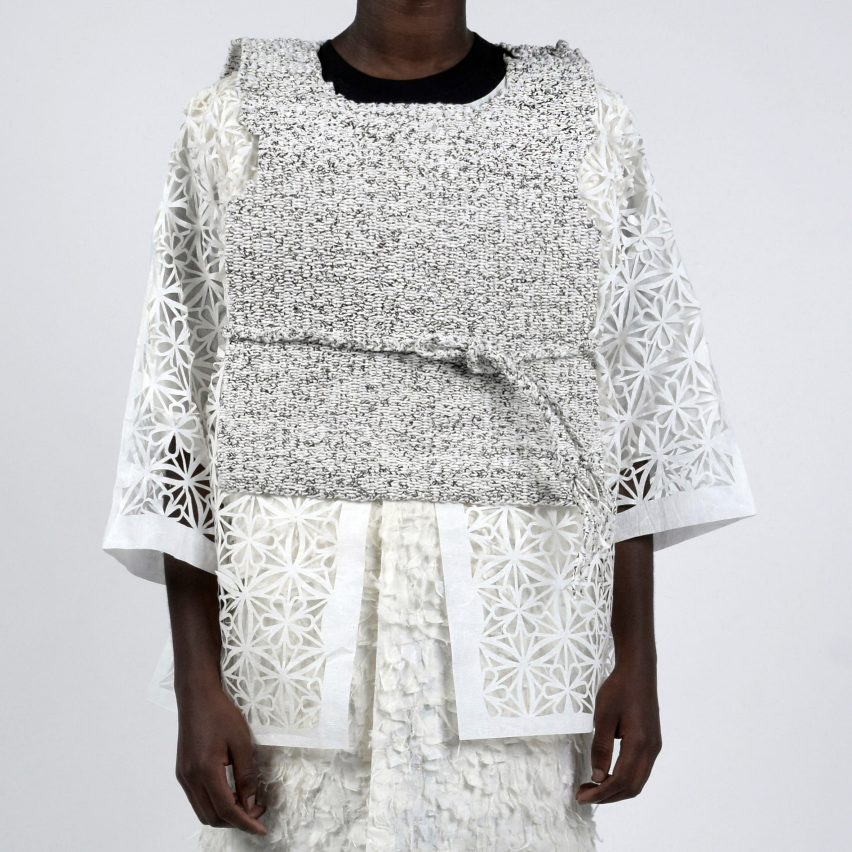
South Korean designer Sun Lee has created a six-piece collection of clothing from traditional Korean paper which has been cut, torn and rolled by hand.
Design Academy Eindhoven graduate Lee developed the fashion collection, called Consumption of Heritage, after seeing the amount of clothes waste thrown away at the end of every season.
"This collection is based on three principles of ephemerality, disposability and sustainability," Lee told Dezeen.
Made from hanji paper and hansan-mosi fabric, the modular pieces can be layered over one another and are designed to be easily recycled.
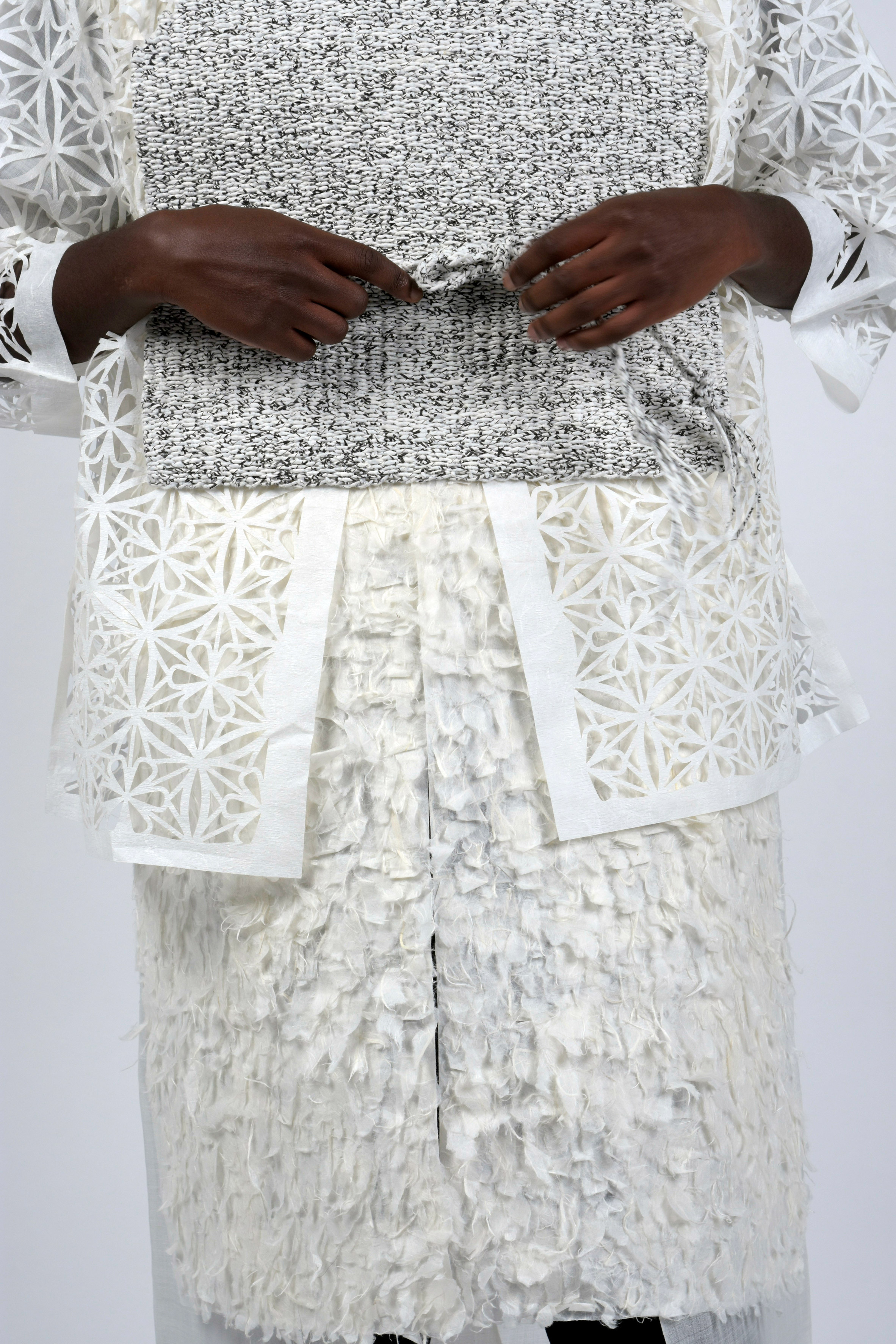
Hanji paper is produced by soaking bark from the mulberry tree to make it into a pulp. The sticky sap from a hibiscus plant is then added after which the mixture is laid out into sheets on a bamboo screen.
The paper is renowned for its durability, insulation and ventilation properties. It was often hung up as curtains or over doors to help control temperature inside traditional wooden homes.
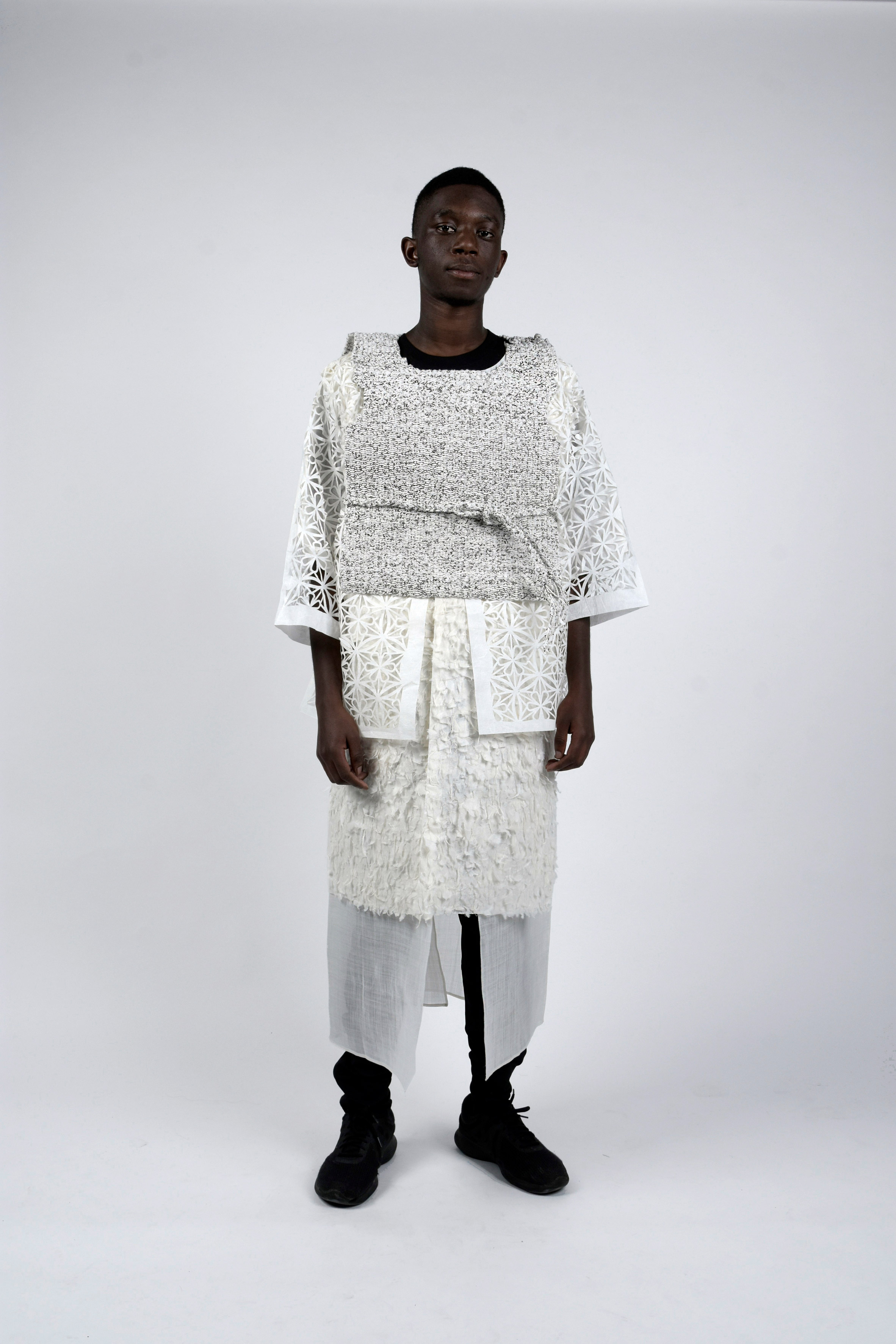
Lee rolled strips of hanji paper printed with Korean lettering into cords and wove them together to create Ji-seung Vest, named after the process of weaving the paper.
Worn as a sweater vest with open sides, a piece of the handmade string ties at the waist to connect the back to the front. The vest is the collection's central piece, as the distinctive colour pattern created from the printed letters stands out against the other paler pieces.
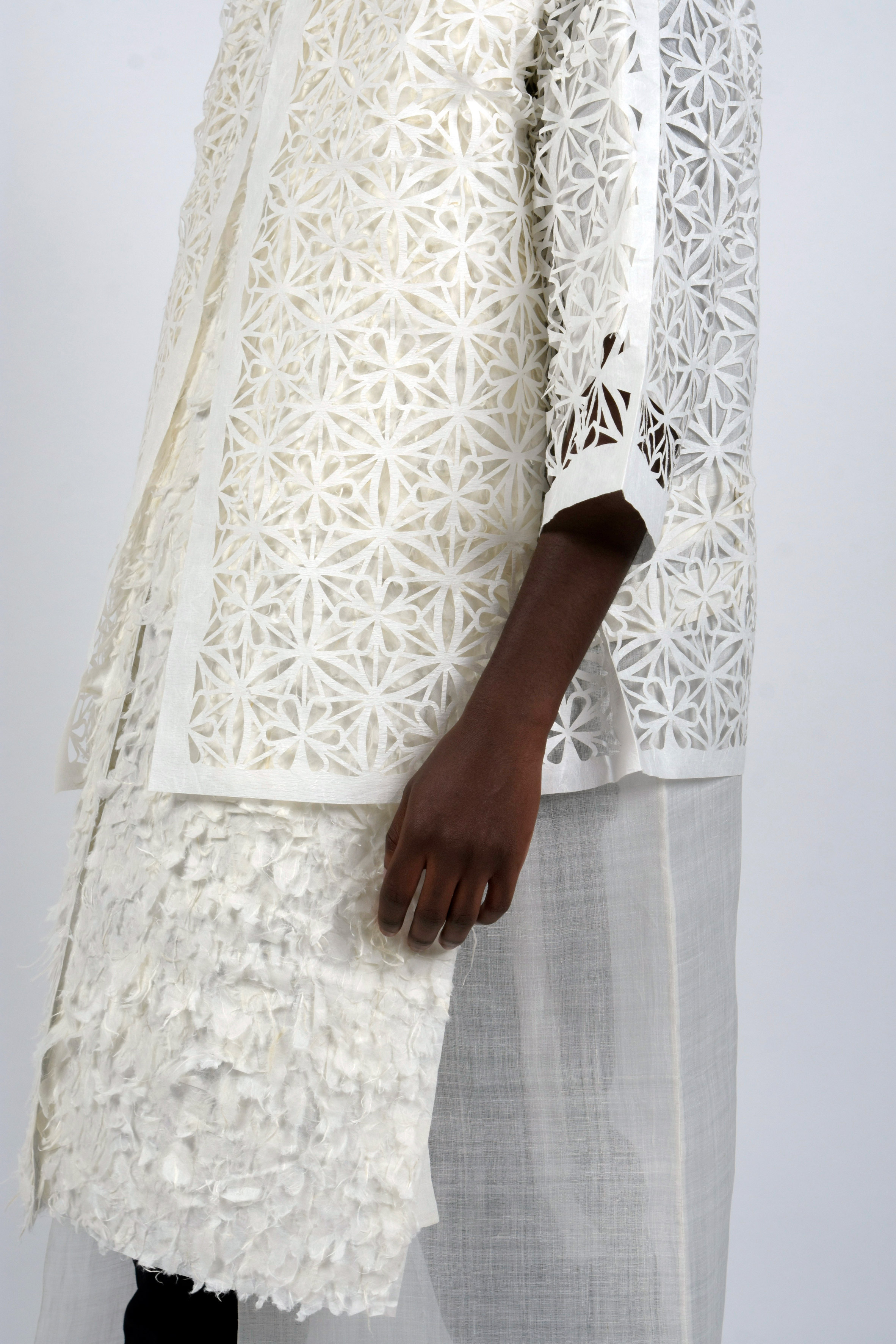
For Dancheong Pattern Jacket, the designer hand-cut a geometric floral pattern into a collarless paper jacket. The outer trim on the wide, three-quarter length sleeves and round neckline is left uncut.
The collection's outerwear piece is Hanji Padding Coat. Designed for a boxy fit, the quilted shell is made from paper whilst excess material is stuffed inside as the padding.

A more translucent, thinner material than hanji, hansan-mosi fabric is used to create the full-length Transforming Coat. The fabric is woven from the inner fibres of the ramie nettle plant, which is native to east Asia.
Round balls of hanji covered in hansan-mosi are used as toggle fastenings to connect the waist-length jacket to the longer skirt below. Like the Ji-seung Vest, this coat also ties at the waist.
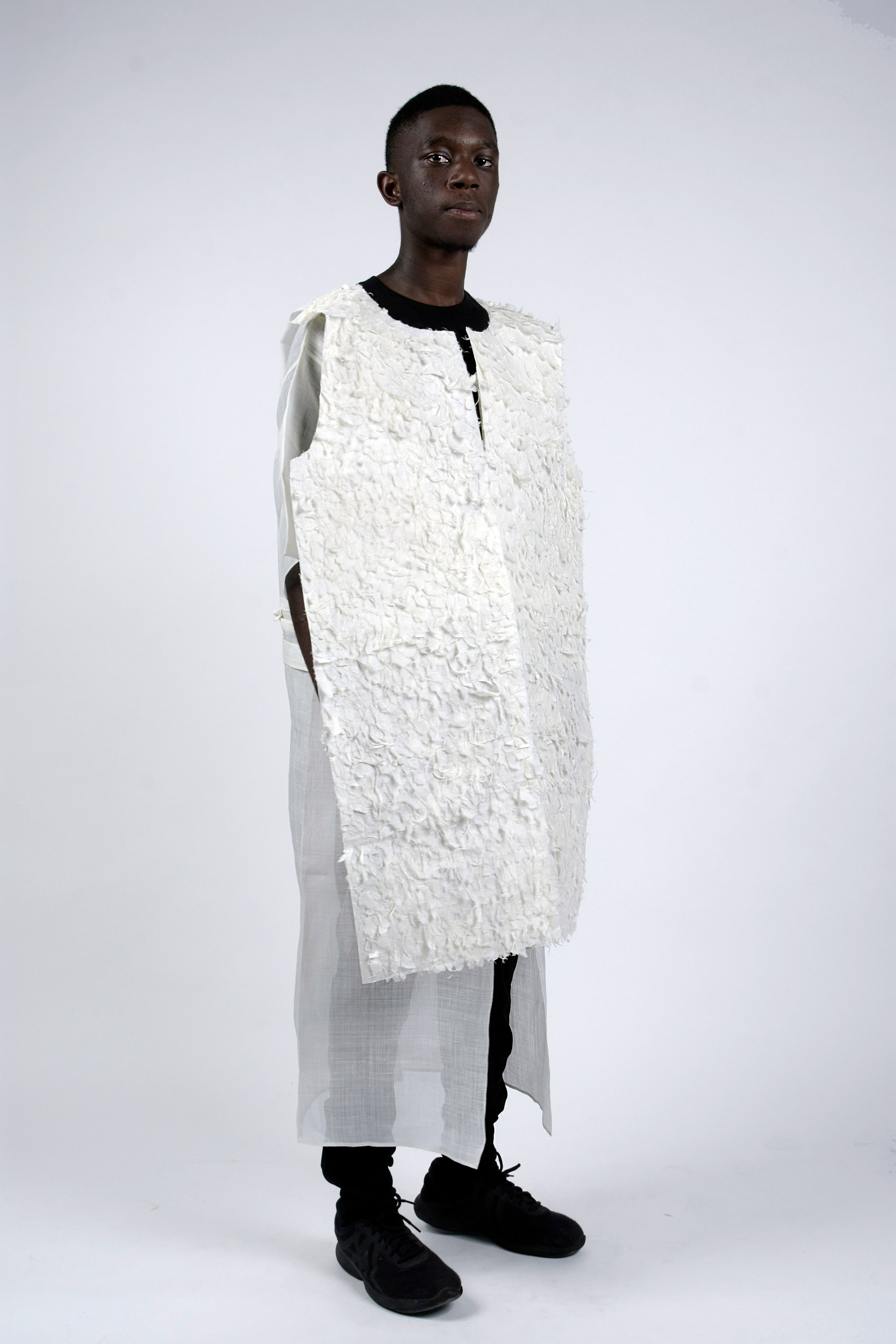
The Transforming Coat can be layered with a knee-length vest with V-neck slit called Hanji Feather – made with ripped hanji paper to mimic a bird's plumage – or worn with the collar-and-sleeve attachment.
This detachable sleeve and collar is named after a Korean decorative lacquerware technique called Najeonchilgi, which involves inlaying pearl or seashells into intricately cut pieces of wood.
Lee translates this technique into iridescent floral patterns on black hanji paper, found on the collar and a motif on each sleeve cuff.
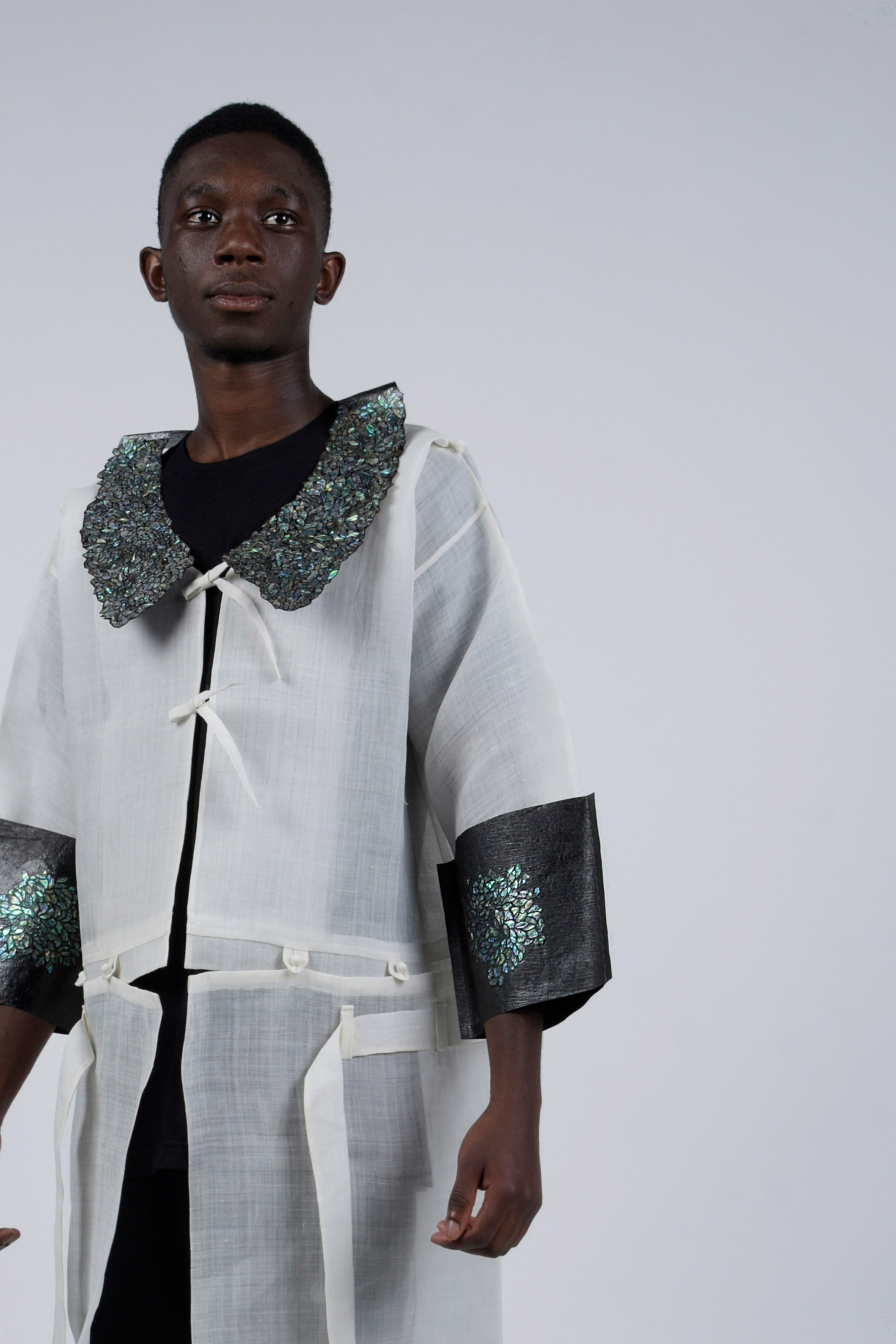
All the materials used in the collection were purchased in Korea and brought back to the Netherlands where Lee is based.
The designer cited that 73 per cent of waste clothing, predominantly manufactured with synthetic plastic fibres, is incinerated according to the Ellen MacArthur Foundation's future textiles report.
"The fragile pieces, like the Dancheong jacket, act as disposable garments," she explained to Dezeen. "Hanji paper is sustainable, disposable and easily recyclable. This means each garment can be thrown away in a more sustainable way than fast fashion."
"I know it's probably impossible to live without harming nature, however we should make less adverse impacts and lead more sustainable lives," she continued.
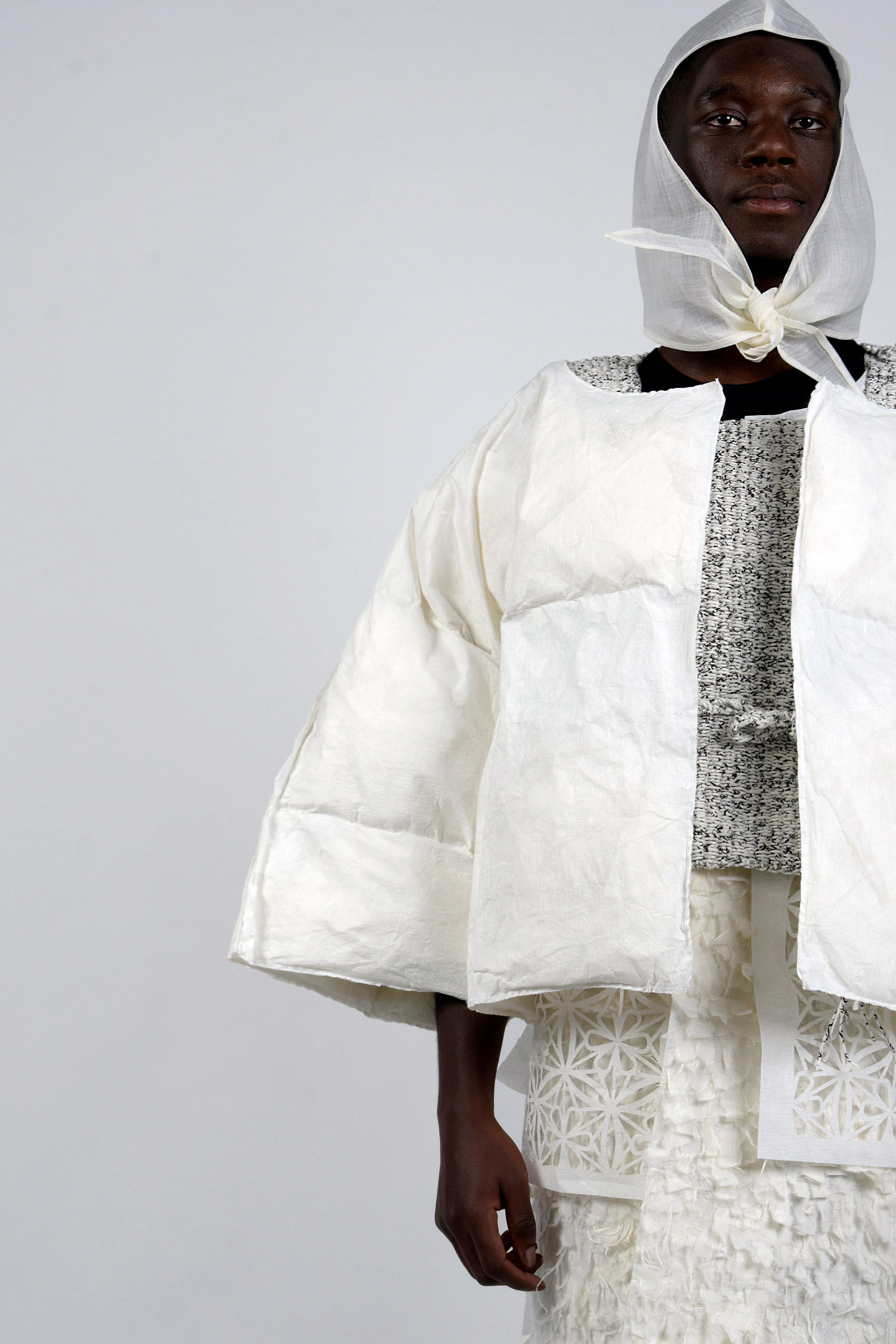
Before studying social design at Design Academy Eindhoven, Lee ran her own fashion label which was stocked at Hyundai department store in Seoul.
Consumption of Heritage aims to introduce traditional materials and techniques back into contemporary culture, as well as address the pressing environmental issues and waste caused by the fashion industry.
"I want to bring back this culture of craft to our consumer society," she said. "This collection is an invitation to reflect on the current state of fashion and imagine solutions for sustainable craft."
Although focusing on her native country's techniques and materials, the designer told Dezeen that she hopes other cultures will be motivated to bring back their diminishing crafts into consumer society.
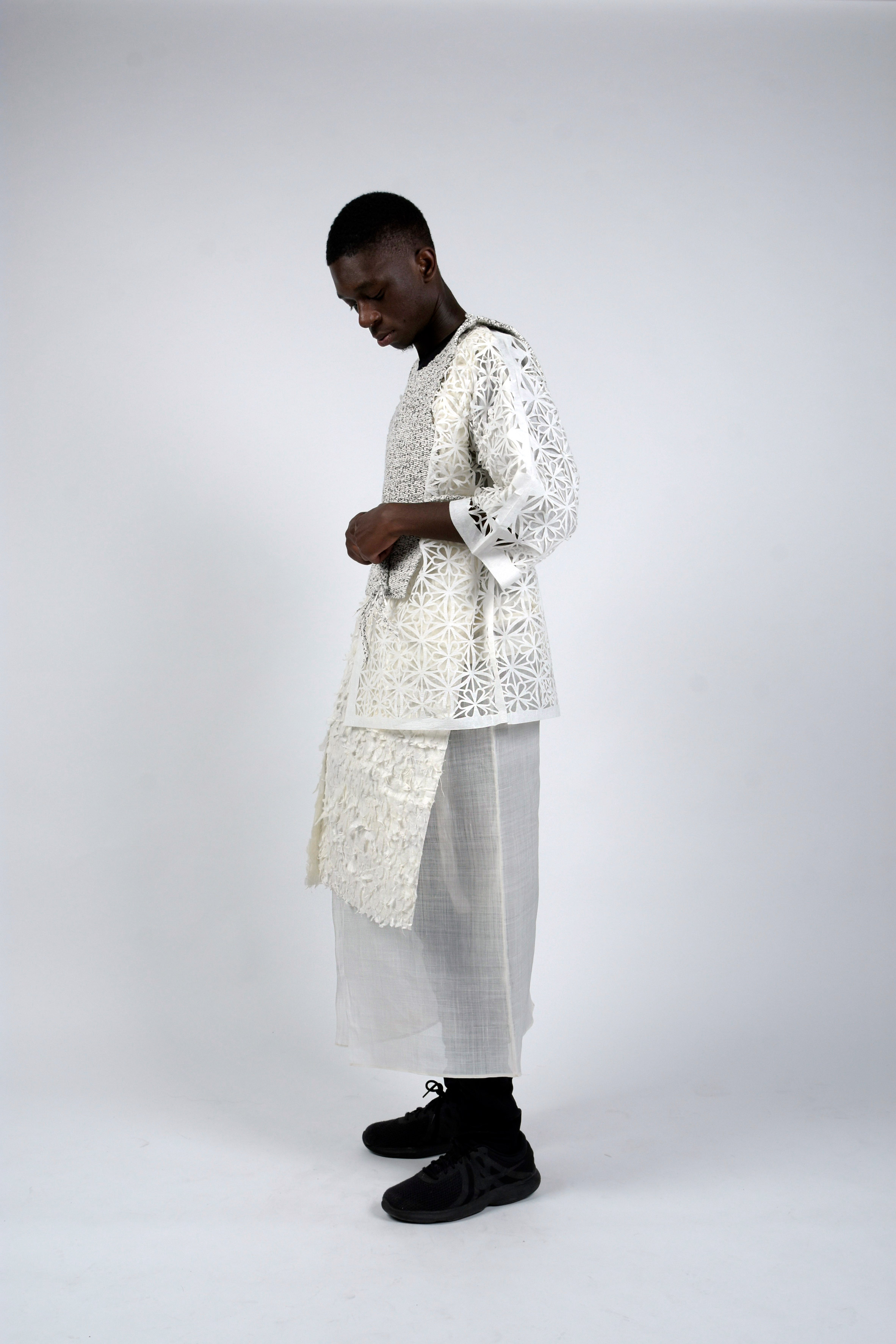
Other projects on show at Dutch design week were Annie Larkins' chicken-egg alternative using pea proteins, Atelier NL's benches made from trees felled in a storm and Micheline Nahra's deconstructed dining set.
Photography is by Shen Yichen and main image is by Ronald Smits.
The post Sun Lee reworks traditional Korean craft into clothes made from paper appeared first on Dezeen.
from Dezeen https://ift.tt/2KcnO1A
No comments:
Post a Comment